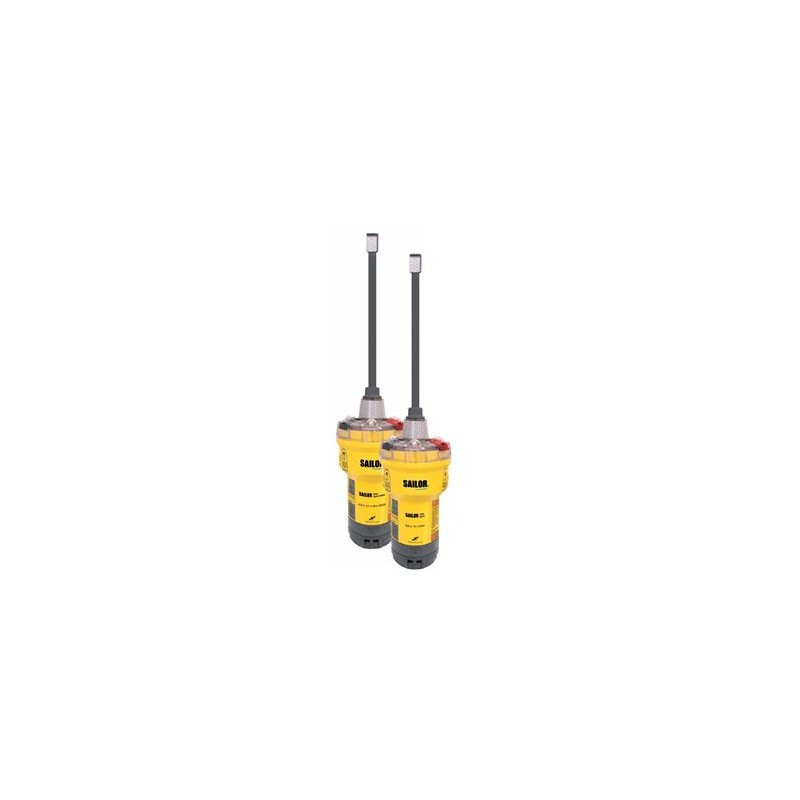Cobham Sailor 4065 EPIRB Cat II - GNSS - incl. Manual Bracket
4080.33 ₪ net price (non-EU countries)
Karol Łoś
Product Manager
![]() /
/ ![]()
+48603969934![]() +48507526097
+48507526097
[email protected]
Description
SAILOR 4065 EPIRB with GNSS and Manual Bracket
The SAILOR 4065 EPIRB is a state-of-the-art satellite distress beacon designed for seamless operation with the Cospas-Sarsat international satellite search and rescue system. Fully compatible with MEOSAR satellite technology, this EPIRB ensures global distress alerting for maritime safety.
This device is GMDSS compliant and comes in a sleek, slimline design with a fully enclosed float-free housing, allowing for self-testing of the EPIRB. For added versatility, the SAILOR 4065 EPIRB includes a manual bracket, facilitating quick release for carry-off situations.
Key Features:
- GMDSS Compliant: Meets international maritime safety standards.
- Global Distress Alerting: Provides worldwide coverage for emergency situations.
- MEOSAR Compatible: Enhanced satellite location capabilities for faster response.
- Compact and Lightweight: Easy to handle and store.
- Automatic Deployment: Activates automatically upon immersion in water.
- Longevity: Up to 10-year shelf life with easy battery replacement.
- Advanced Navigation: Built-in GNSS receiver with GPS, Galileo, and GLONASS support.
Choose between two versions: one with GNSS for precise location details including latitude and longitude, and one without. The GNSS model provides location accuracy to within +/- 62 meters, while both models utilize the 406MHz frequency for global beacon localization.
Upon activation, the EPIRB's 121.5MHz homing transmitter and high-intensity strobe light assist rescue teams in pinpointing your location, even under poor visibility conditions. The device adheres to both Cospas-Sarsat and Global Maritime Distress and Safety System (GMDSS) requirements, as well as International Maritime Organization (IMO) regulations.
Technical Specifications:
406MHz Transmitter
- Frequency: 406.025MHz +/-1kHz
- Power Output: 5 Watts nominal
121.5MHz Transmitter
- Frequency: 121.5MHz +/- 3.5kHz
- Power Output: 100mW nominal
GNSS Receiver
- Constellations: GPS, GLONASS, Galileo
- Frequencies: 1575.42 MHz (GPS, Galileo), 1602.00 MHz (GLONASS)
- Sensitivity: -167 dBm minimum
- Satellites Tracked: 72 channel
Strobe Light
- Type: 3 high intensity LEDs
- Flash Rate: 23 flashes per minute
Battery
- Type: Lithium iron disulphide
- Operating Life: 48 hours minimum
- Shelf Life: 5-year health check recommended
Environmental Conditions
- Operating Temperature: -20°C to +55°C (-4°F to +131°F)
- Storage Temperature: -30°C to +70°C (-22°F to +158°F)
- Automatic Release Depth: 4 m maximum
Dimensions and Weight
- EPIRB Weight: 110 g
- EPIRB Dimensions: 425 x 105 x 105 mm (incl. antenna)
- Manual Bracket Weight: 110 g
- Manual Bracket Dimensions: 135 x 125 x 125 mm
- Float Free Enclosure Weight: 1075 g
- Float Free Enclosure Dimensions: 415 x 135 x 135 mm
Compliance Standards:
- COSPAS-SARSAT: C/S T.001 C/S T.007
- Europe: MED (wheelmark)
- USA: USCG & FCC
- IMO Regulations: A.662(16); A.694(17); A.810(19); A.814(19)
The SAILOR 4065 EPIRB is programmed with a unique serial number for registration with national authorities. It can be re-programmed with the vessel's satellite or radio call sign where permitted. Activation is simple, either automatically upon water immersion or manually via a protected push button.


